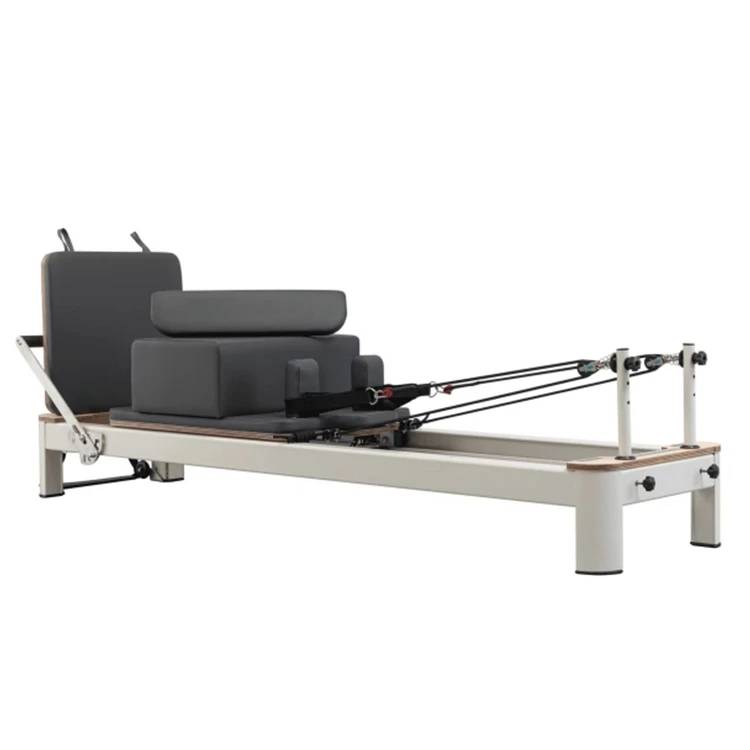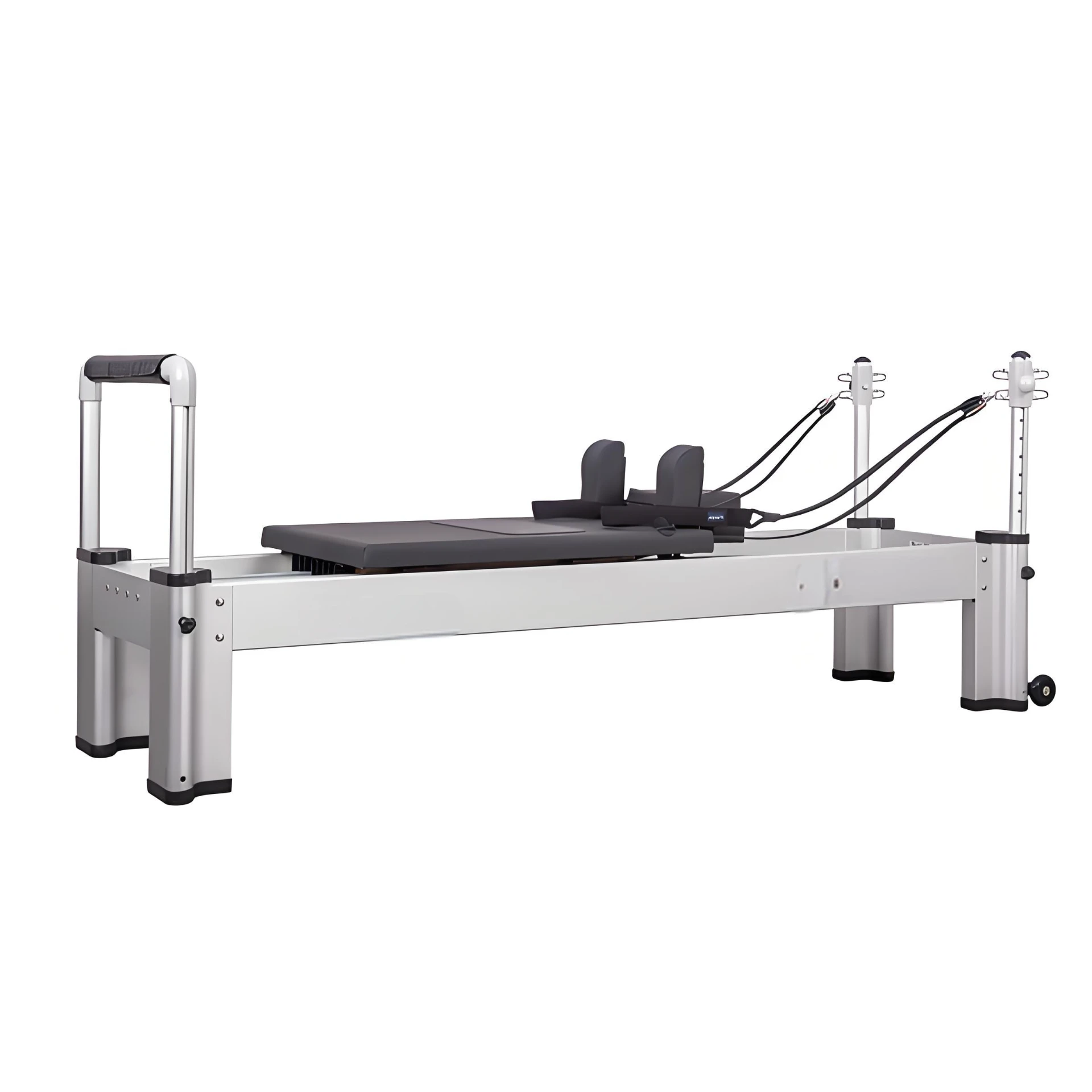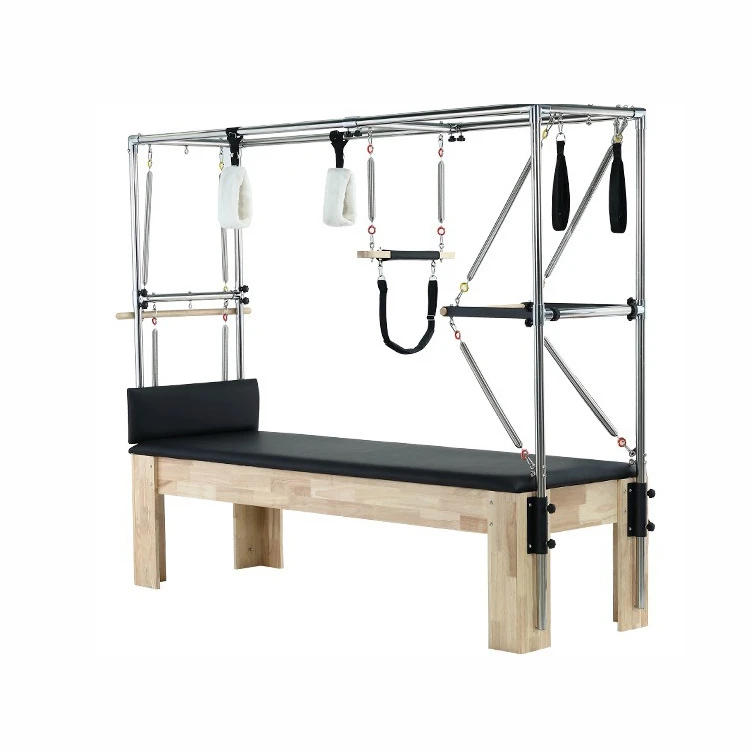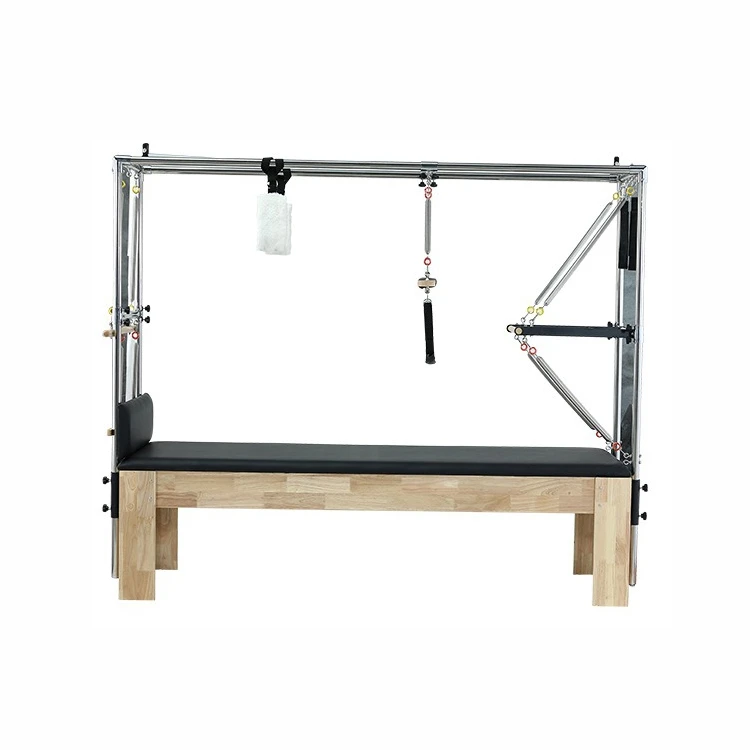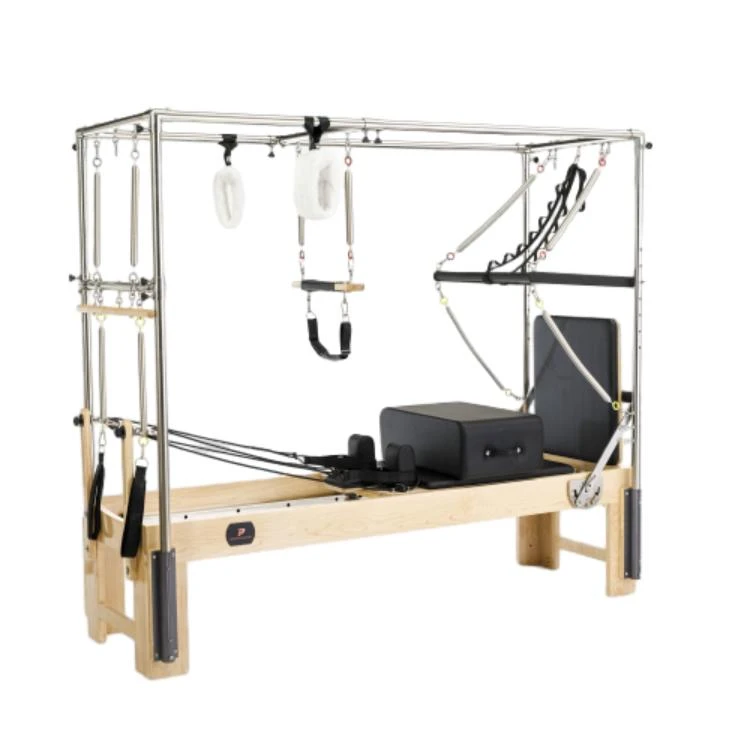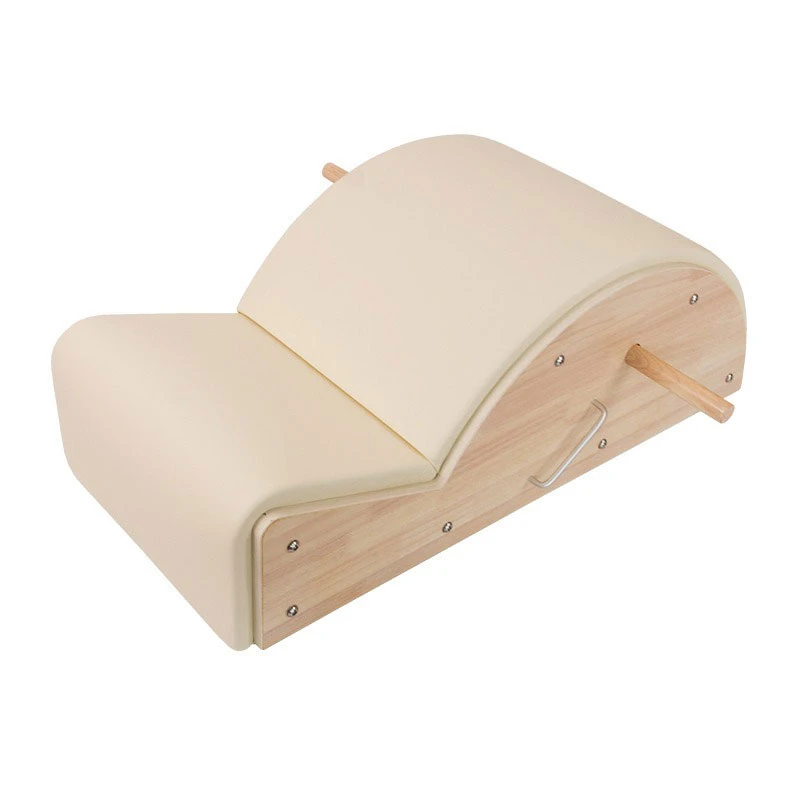Pilates Reformer Types and Studio Equipment
When setting up a Pilates studio or upgrading equipment, choosing the right Pilates reformer types is critical to client satisfaction and effective instruction. Not all reformers are created equal—each type serves unique purposes, skill levels, and space constraints. Recognizing the different Pilates reformer types helps instructors and studio owners build a balanced and versatile practice environment.
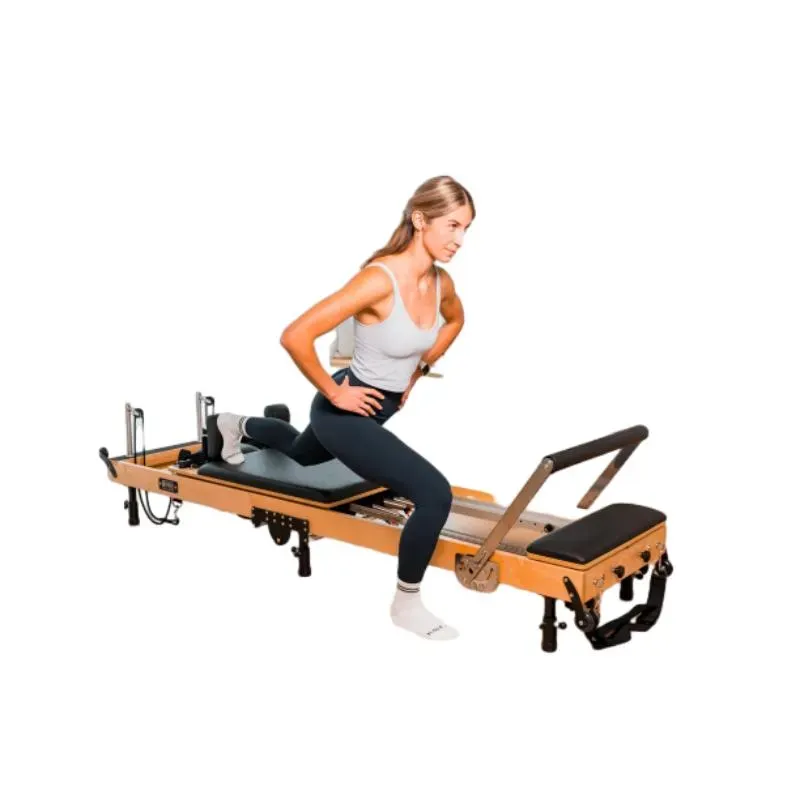
The most common Pilates reformer types include studio reformers, portable reformers, clinical reformers, and foldable home models. Studio reformers are robust, made of wood or metal frames, and equipped with adjustable foot bars, ropes, and carriage systems. These are ideal for group classes and professional instruction. Portable reformers, often lighter and more compact, are perfect for home users or traveling instructors who need convenience without compromising function.
Clinical reformers, another key category of Pilates reformer types, are often used in rehabilitation settings. They offer more adaptability for patients recovering from injuries and typically come with extended towers, therapeutic spring options, and modifications for mobility restrictions. Meanwhile, home reformers are foldable and lightweight, offering space-saving solutions without sacrificing core Pilates functionality.
Each of these Pilates reformer types supports a wide range of exercises but choosing the right one depends on your audience, setting, and budget. Knowing which type aligns with your goals ensures long-term value and enhanced performance.
How the Pilates Chair Enhances Functional Strength and Balance
Often overlooked in mainstream Pilates equipment discussions, the Pilates chair is one of the most dynamic tools for strength and balance training. Also known as the Wunda Chair, this compact apparatus allows for hundreds of upper and lower body exercises, all while promoting core control, alignment, and coordination.
The Pilates chair typically consists of a padded seat, a spring-loaded pedal, and optional handles for support. It challenges stability and muscular endurance by encouraging vertical movement patterns—standing presses, single-leg lifts, tricep dips, and seated core rotations, to name a few. Its compact design makes it perfect for smaller studios or in-home fitness setups.
Using the Pilates chair is beneficial for athletes looking to improve agility and proprioception. It also serves rehab clients needing functional support to regain lower-body control. Trainers appreciate the chair’s scalability—springs can be adjusted for resistance, while exercises can be performed seated, standing, or in combination with mat or reformer workouts.
Integrating a Pilates chair into your studio offering means clients can enjoy full-body conditioning in new, exciting formats. Its versatility makes it an ideal complement to larger apparatus like reformers or Cadillacs, adding variety and precision to programming.
Choosing the Right Pilates Factory Reformer for Quality and Reliability
If you're a studio owner or retailer sourcing equipment in bulk, selecting the best Pilates factory reformer can save both money and future headaches. A Pilates factory reformer refers to commercial-grade reformers purchased directly from manufacturers, often customizable in design, materials, and specifications.
Top-tier Pilates factory reformer options come with heavy-duty aluminum or hardwood frames, eco-leather upholstery, precision carriage systems, and silent spring resistance setups. These reformers are engineered for longevity, ideal for studios with high daily usage. When evaluating a supplier, consider their production quality, certifications, and experience in servicing Pilates studios globally.
Buying from a reliable Pilates factory reformer source also means better after-sales support, consistent component quality, and optional upgrades. Whether you want a reformer with a vertical tower, jump board, or digital counter system, factory-direct options often offer these customizations with competitive pricing.
Moreover, many manufacturers provide OEM services for branding and packaging, ideal for fitness entrepreneurs launching their own product lines. Collaborating with a trusted Pilates factory reformer partner ensures scalability, lower defect rates, and streamlined logistics—especially important for large studios or international buyers.
How Reformer Cost Varies and What to Expect from Each Price Tier
One of the most common concerns for buyers is understanding reformer cost. Whether you're investing in your first home reformer or equipping a professional studio, the reformer cost varies significantly depending on build quality, design, features, and brand reputation.
Basic home reformers can start as low as $500 to $1,000. These models often feature foldable frames, synthetic padding, fewer spring settings, and limited adjustability. They’re great for casual users with limited space. However, they may not offer the long-term durability required by serious practitioners or studios.
Mid-range reformers typically range from $1,500 to $3,000. At this reformer cost level, buyers get better frame materials (wood or high-grade steel), more resistance options, and enhanced adjustability. These are perfect for dedicated home users, boutique studios, and instructors who need reliable performance.
High-end reformers—priced between $3,500 and $6,000 or more—come from elite brands and offer superior build, tower attachments, smooth gliding mechanics, ergonomic padding, and aesthetic finishes. The reformer cost here also includes added features like jump boards, box sets, and accessories, along with better warranties and customer support.
While it’s tempting to choose a lower-cost unit, the real question is value over time. Consider how frequently it will be used, the type of clientele you serve, and what features will support long-term usage. A well-invested reformer cost pays off in client satisfaction, lower maintenance, and fewer replacements.
How to Combine Pilates Reformer Types and Pilates Chair for Holistic Training
A balanced studio setup doesn’t rely on a single piece of equipment. By integrating multiple Pilates reformer types with the Pilates chair, instructors can create holistic, progressive programming that keeps clients engaged and challenged across all fitness levels.
For example, beginners might start with classical studio reformers for foundational movements, while intermediate clients benefit from the added dynamics of a tower or jump board. Advanced clients, especially those in athletic or rehab settings, can alternate between clinical reformers and Pilates chair exercises for neuromuscular enhancement and movement retraining.
When planning your equipment mix, consider the strengths of each apparatus. The Pilates reformer types bring dynamic horizontal resistance and support, while the Pilates chair provides vertical balance challenges. Combining both fosters comprehensive strength, coordination, and postural improvement.
Instructors can also build themed classes—"Core on the Chair," "Jump and Flow Reformers," or "Tower Power"—to diversify schedules and market more effectively. Whether your space is boutique or large-scale, blending Pilates reformer types with a Pilates chair setup ensures client satisfaction, versatility, and maximum return on equipment investment.
Pilates reformer FAQs
What are the most common Pilates reformer types?
The most common Pilates reformer types include studio reformers, portable reformers, clinical reformers, and home models. Each type varies in size, adjustability, and resistance features. Studio reformers are built for group instruction, while clinical models offer rehab-friendly adjustments and home units are designed for compact use.
Is the Pilates chair suitable for beginners?
Yes, the Pilates chair is suitable for beginners with proper instruction. Many exercises can be modified for safety and comfort. It’s especially useful for developing core strength and balance while offering a compact training tool for studios and home use alike.
What should I look for in a Pilates factory reformer?
When sourcing a Pilates factory reformer, prioritize durable construction, smooth glide mechanics, adjustable features, and reliable manufacturer support. Look for certifications, material quality, spring durability, and the ability to customize features for your studio needs.
How much does a professional reformer cost?
Professional reformer cost ranges from $2,000 to $6,000 or more depending on brand, materials, and features. High-end reformers include tower systems, advanced resistance options, and better warranties, making them ideal for studio use and long-term investment.
Can I use different Pilates reformer types in one studio?
Absolutely. Mixing various Pilates reformer types enhances studio flexibility and allows instructors to tailor sessions based on client needs. You might use clinical reformers for rehab, tower models for advanced clients, and basic models for beginners or group classes.
Latest news
-
Types of Pilates Machines Used in Group Classes Versatility GuideNewsJul.07,2025
-
Pilates Spine Corrector Benefits for Posture and Core StrengthNewsJul.07,2025
-
Pilates Chair for Sale Adjustable Spring Systems for All Fitness LevelsNewsJul.07,2025
-
Ladder Barrel for Sale Commercial-Grade Wooden ConstructionNewsJul.07,2025
-
Eco-Friendly Pilates Studio Equipment Sustainable Materials GuideNewsJul.07,2025
-
Adjustable Pilates Chair Settings for All Fitness LevelsNewsJul.07,2025
- Address
- Room 1601, 1302, Building A, Zijingguandi, Qiaodong District, Xingtai City, Hebei Province, China
- Sandra@raetin.com
- Phone
- +86 18231139331

